12 Unique Polearms Found in Museums and Private Collections
Polearms have long been a symbol of both utility and artistry. Many of these weapons were crafted with intricate designs that reflect the culture of their time. Whether displayed in museums or carefully kept in private collections, each polearm tells a unique story of craftsmanship and combat. They served not only as practical tools but also as symbols of power.
This post may contain affiliate links, which helps keep this content free. Please read our disclosure for more info.
Lucerne Hammer
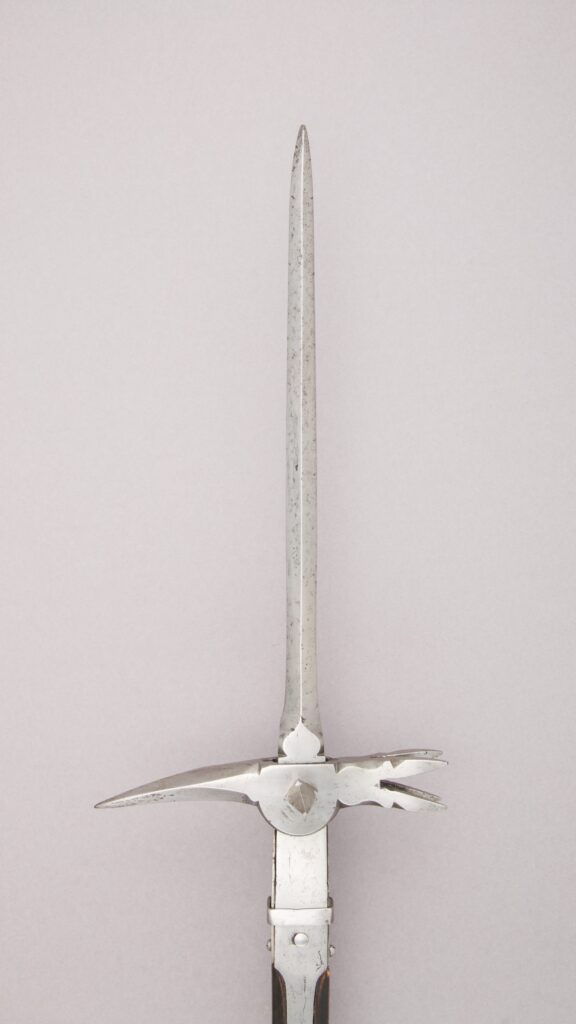
The Lucerne Hammer is a Swiss polearm from the 17th century, characterized by its unique hammerhead with four prongs. It was used by the civic guards of the Old Swiss Confederacy, mainly for crowd control during civil unrest. This polearm was often displayed in public ceremonies as well as for combat. The Lucerne Hammer can be found in various museums across Switzerland, including the Armory of Lucerne. Due to its rarity and intricate craftsmanship, it is estimated to be worth between $10,000 and $15,000.
Many Lucerne Hammers feature ornamental designs, with the hammerhead typically resembling a large axe. The shaft is often longer than those of regular polearms, enabling users to engage opponents at a safe distance. This design was especially useful in urban warfare, where tight spaces required specialized weapons. The hammerhead was designed not just for cutting but also for delivering powerful blows. Its preservation in Swiss collections continues to attract both collectors and historians, further solidifying its place in Swiss martial history.
Naginata
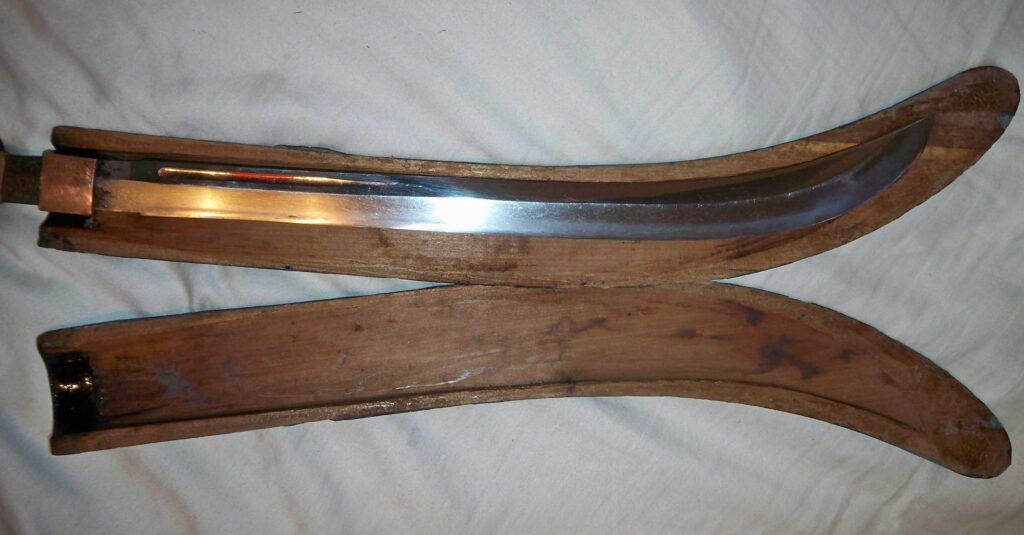
The Naginata is a traditional Japanese polearm with a curved blade at the end of a wooden shaft. It dates back to the Heian period (794-1185), with significant use during the feudal era by samurai and warrior monks. The Naginata can be found in the Tokyo National Museum and various other Japanese cultural institutions. It was highly regarded for its versatility in combat, capable of both slashing and thrusting attacks. Today, its value ranges from $6,000 to $10,000, depending on its age and condition.
Naginata were often used by female warriors, known as Onna-bugeisha, who trained to protect their homes and villages. The blade’s curvature allowed for swift cutting movements, making it effective against cavalry. The long shaft also provided significant reach in battle, making it ideal for both defense and offense. Many examples of the Naginata feature beautifully engraved handles and ornate fittings. The weapon’s cultural and historical significance, along with its rarity, contributes to its high market value.
Guandao
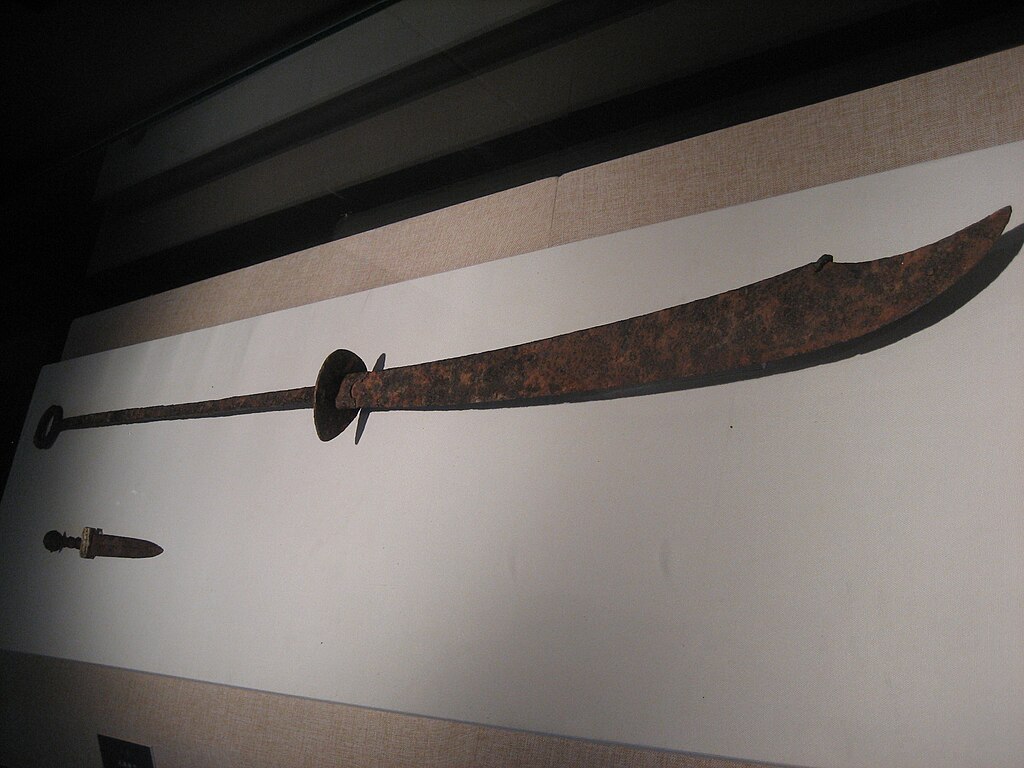
The Guandao is a Chinese polearm known for its long, crescent-shaped blade. It originated during the Three Kingdoms period (220-280 AD), with its most famous association being with the legendary general Guan Yu. Examples of the Guandao can be found in museums such as the Inner Mongolia Museum. The weapon was used for both combat and ceremonial purposes, offering powerful cutting strikes in battle. Due to its historical importance, the Guandao can be valued between $7,000 and $11,000.
This polearm is often characterized by its massive blade, which can reach up to 36 inches in length. Its unique shape allows it to be wielded for both slashing and thrusting, making it highly versatile. The Guandao was favored by generals for its symbolic association with strength and honor, often appearing in artwork and military depictions. In addition to its use in battle, it was also part of the ceremonial equipment of many Chinese dynasties. Today, its cultural value and craftsmanship make it a prized collector’s item.
Sodegarami
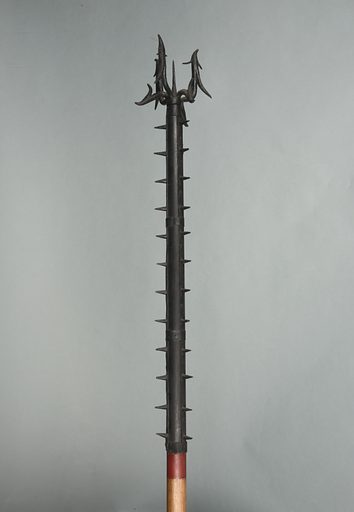
The Sodegarami is a Japanese polearm used primarily by samurai police during the Edo period to apprehend criminals. It features a hooked, barbed head designed to catch and restrain suspects without causing fatal injuries. Examples of this polearm are preserved in various Japanese museums, such as the Kyoto National Museum. The Sodegarami’s primary function was as a non-lethal weapon for crowd control and capturing suspects. Its estimated market value is between $5,000 and $8,000.
The design of the Sodegarami reflects its specialized purpose. The barbed hooks at the end of the weapon could easily entangle the sleeves or clothing of a suspect, preventing escape. The long wooden shaft provided the samurai with reach and the ability to maintain distance from potentially dangerous individuals. Over time, the Sodegarami also became a symbol of the authority and power held by the samurai class. Its historical significance and rare existence in modern collections contribute to its substantial value.
Halberd
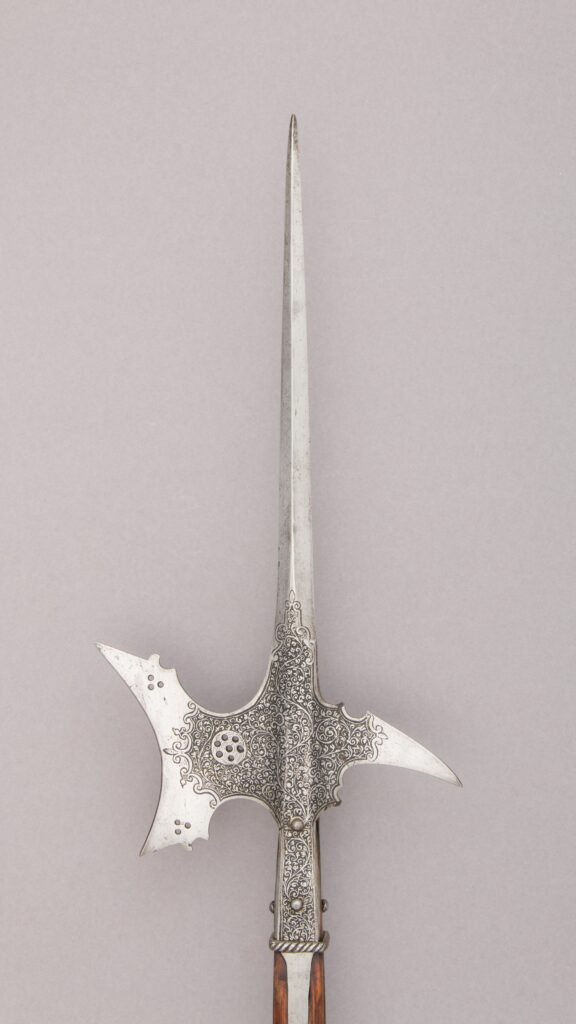
The Halberd is a European polearm that originated in Germany during the 14th century. It combines an axe blade, a spearpoint, and a hook for use in combat, making it a versatile weapon. Examples of the Halberd can be found in the Saint Louis Art Museum and other European institutions. It was used by infantry to combat cavalry and as a general-purpose battlefield tool. The Halberd’s value is estimated at $12,000 to $18,000 due to its craftsmanship and historical significance.
The combination of an axe blade and spearpoint made the Halberd particularly effective against armored opponents. The hook on the backside of the weapon was used to pull cavalry riders from their horses. Halberds became popular during the late Middle Ages and Renaissance periods, with their designs evolving to reflect the needs of the time. Today, the Halberd is a rare artifact that draws interest from historians and collectors alike. Its unique design and historical use contribute to its high value in the market.
Partisan
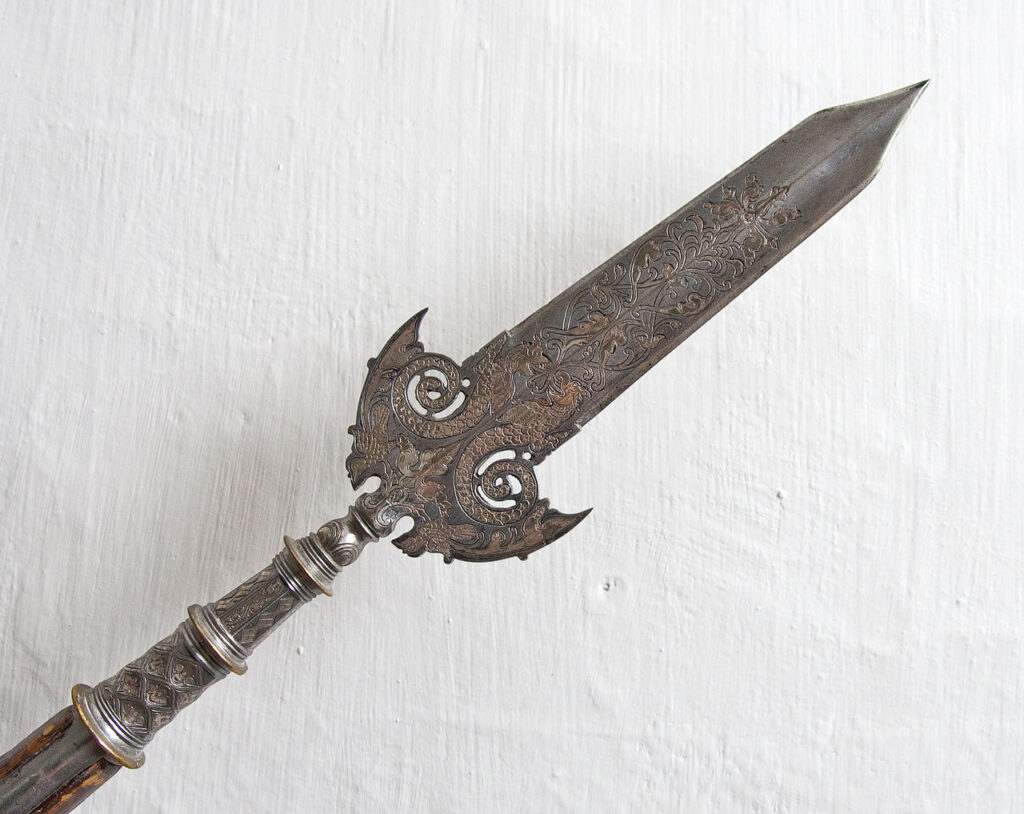
The Partisan is an Italian polearm that was used during the Renaissance period. It has a broad blade with sharp edges, making it effective for both slashing and thrusting. Examples of the Partisan are found in various European collections, including those in Italy and Germany. The weapon was primarily used by infantry in battles during the Renaissance. Its value today is estimated between $9,000 and $14,000, based on its historical importance and rarity.
The Partisan’s large blade made it effective against both infantry and cavalry. Its design allowed for swift, powerful attacks, while its length gave users greater reach in combat. As a weapon of war, the Partisan became synonymous with the evolving tactics of Renaissance armies. The blade’s wide edges also made it suitable for blocking and parrying attacks. The Partisan’s historical role and beauty make it a prized possession in many private collections.
Spontoon

The Spontoon is a French polearm that was used by infantry officers in the 17th and 18th centuries. It features a long, spear-like blade with additional side prongs. Examples of the Spontoon are preserved in European military museums, including those in France. The weapon was designed for both thrusting and signaling in battle. Its market value is estimated between $8,000 and $12,000, depending on its condition and historical importance.
The Spontoon was primarily used by officers to lead their troops during battle. Its design allowed for quick jabs at the enemy while also providing a way to signal troops on the battlefield. The weapon’s dual purpose made it a useful tool in both combat and command. It became popular during the 17th and 18th centuries, particularly in European armies. Today, the Spontoon remains an important artifact in military history.
Bardiche

The Bardiche is a Russian polearm that dates back to the 14th century. It has a long, cleaver-like blade that was used for powerful chopping strikes in close combat. The Bardiche can be found in Russian and Eastern European museums, often associated with medieval and early modern warfare. Its primary function was to deal with heavily armored opponents during battles. The estimated market value of the Bardiche is $6,000 to $10,000.
The Bardiche’s design made it a formidable weapon in hand-to-hand combat. Its long blade allowed for wide, sweeping strikes that could easily break through armor. The weapon was also used in ceremonial contexts, further increasing its historical significance. As one of the more iconic Russian polearms, the Bardiche continues to attract the attention of collectors. Its unique design and historical background contribute to its high market value.
Billhook
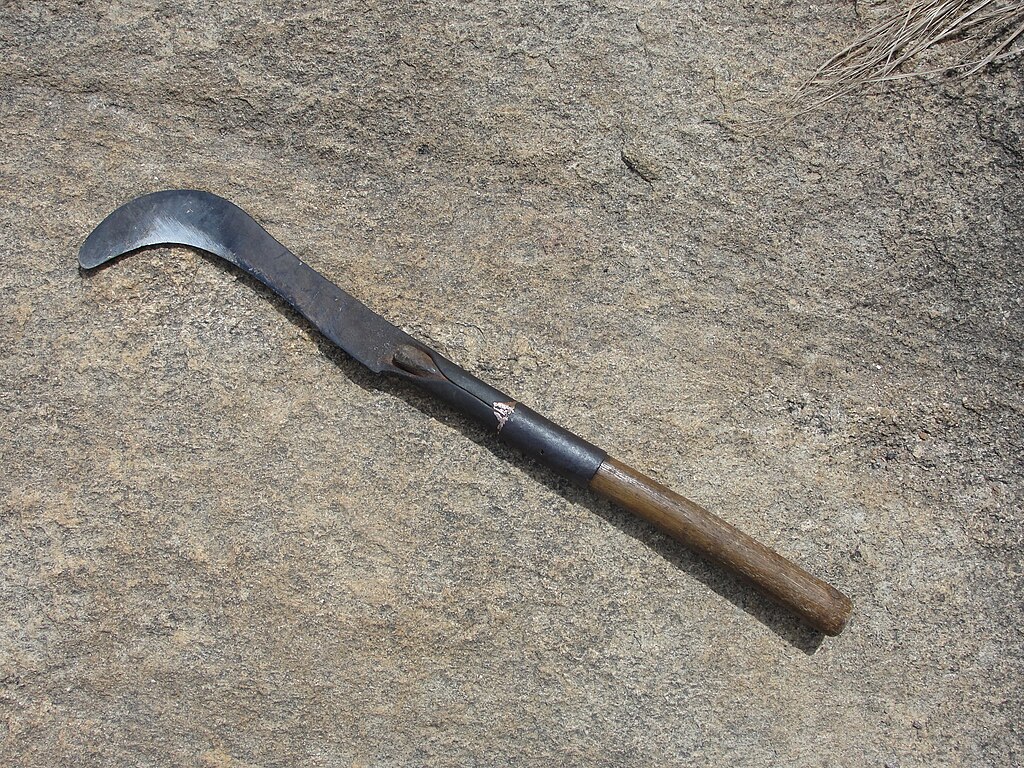
The Billhook is an English polearm that features a curved, hooked blade. It was used from the medieval period through the 17th century for both combat and agricultural purposes. The Billhook can be found in English museums such as the British Museum and the Royal Armouries. Its versatility made it a useful tool for farmers and warriors alike. The market value of this polearm is between $5,000 and $8,000.
Originally used for cutting branches and clearing brush, the Billhook was adapted for combat during the medieval period. Its hooked blade allowed for slashing and hooking opponents, making it effective in close-quarter battles. The Billhook’s versatility as both a tool and weapon made it widely used in rural areas. Its simple yet effective design continues to make it a popular item among collectors. Today, it is valued for both its historical use and its craftsmanship.
Glaive
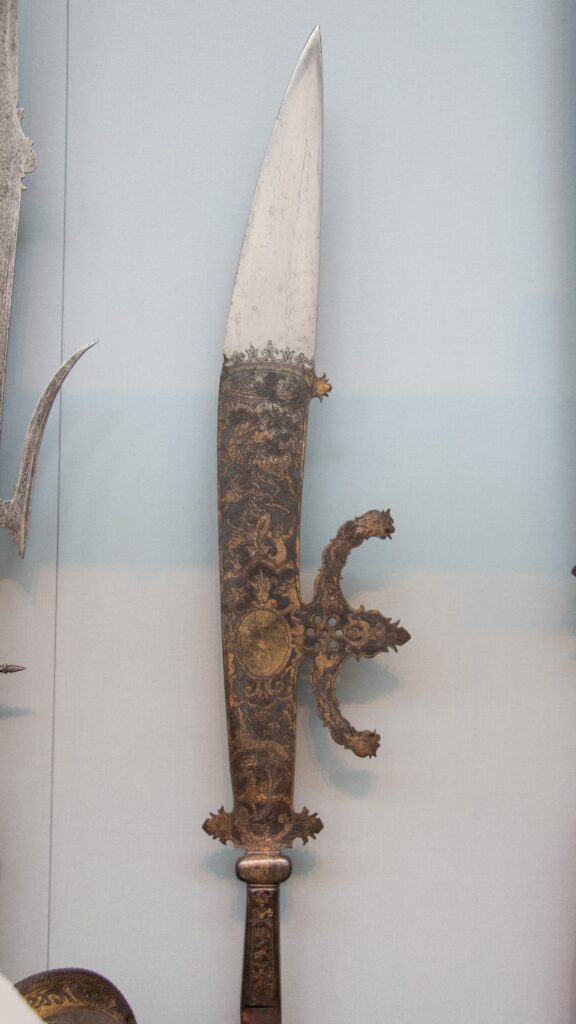
The Glaive is a French polearm with a single-edged blade that was used during the medieval and Renaissance periods. It was designed for slashing and thrusting in battle. The Glaive can be found in various European museums, especially in France. It was primarily used by foot soldiers in battle, providing them with both reach and striking power. The Glaive’s market value is approximately $6,000 to $9,000.
The Glaive’s design made it a popular weapon for infantry during the medieval period. The blade’s single edge allowed for efficient slashing attacks, while its length gave soldiers the advantage of reach. It was a common weapon used by European armies during the Renaissance period. Over time, the Glaive was replaced by more specialized polearms, but its role in early modern warfare remains significant. Today, the Glaive is a rare and valuable item in European military collections.
Sasumata
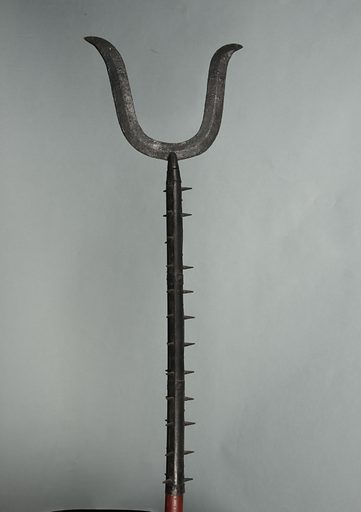
The Sasumata is a traditional Japanese polearm that was used by samurai police officers during the Edo period. It has a forked end with two widely spaced prongs, designed for capturing and restraining criminals without causing injury. The Sasumata is typically displayed in collections such as the Tokyo National Museum. It was primarily used in law enforcement and not in combat, marking its unique place in Japanese martial history. Its market value ranges from $4,000 to $7,000.
Unlike other polearms designed for combat, the Sasumata was a specialized tool used to apprehend suspects. The wide spacing of the prongs allowed officers to capture an individual without piercing the skin. In addition to its practical function, the Sasumata’s design also reflects the level of sophistication in Edo-period law enforcement. Its association with the samurai police force further enhances its historical importance. The Sasumata continues to be an intriguing piece for collectors of historical weapons.
Ranseur
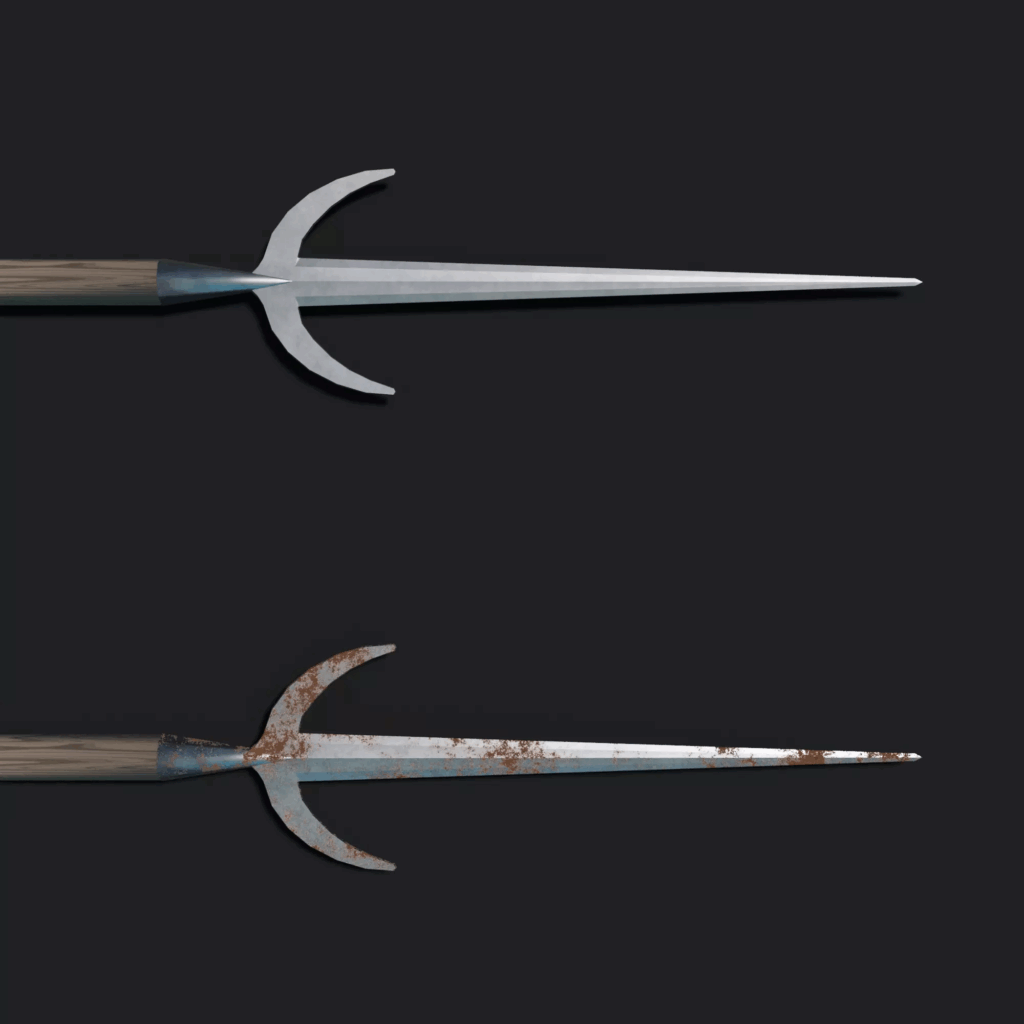
The Ranseur is a French polearm with a spearhead and crossbar, used in the 16th and 17th centuries. It was designed for thrusting and parrying in combat. Examples of the Ranseur can be found in various European museums, particularly in France. The polearm’s design allowed soldiers to engage opponents at a distance while maintaining stability. Its estimated value is around $7,000 to $10,000.
The Ranseur’s unique design made it effective for both thrusting and blocking enemy attacks. The crossbar added stability to the weapon, making it easier to control during combat. It was particularly useful in battles where infantry needed to defend against cavalry. The Ranseur’s distinctive shape and functionality contributed to its popularity in 16th and 17th-century Europe. Today, it remains a sought-after item for collectors and military historians.
This article originally appeared on Avocadu.
